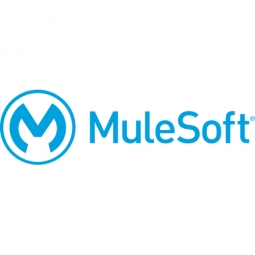公司规模
Large Corporate
地区
- America
国家
- United States
产品
- PEAK
- Force.com
- MuleSoft's Anypoint Platform
技术栈
- Salesforce
- Cloud Computing
实施规模
- Enterprise-wide Deployment
影响指标
- Productivity Improvements
- Cost Savings
- Customer Satisfaction
技术
- 平台即服务 (PaaS) - 连接平台
- 基础设施即服务 (IaaS) - 云计算
适用行业
- 城市与自治市
适用功能
- 人力资源
- 商业运营
用例
- 公共交通管理
- 公共预警与应急响应
- 远程资产管理
服务
- 云规划/设计/实施服务
- 系统集成
关于客户
The State of Colorado is a government entity that provides services to over 5 million citizens. It is headquartered in Denver, Colorado and operates in the public sector. The state government is responsible for a wide range of services, including healthcare, education, transportation, and public safety. In 2009, when the Affordable Care Act was passed, Colorado elected to be one of 17 states to create their own health insurance marketplace instead of using the systems provided by the Federal government. They also expanded Medicaid coverage, which led to a significant increase in applications for these services. The state government needed to ensure that they could efficiently process these applications and provide timely services to their citizens.
挑战
In 2009, the Affordable Care Act was passed, and Colorado chose to create their own health insurance marketplace instead of using the systems provided by the Federal government. They also expanded Medicaid coverage. To ensure their citizens had access to these expanded health care benefits as soon as they came into effect on October 1, 2013, the State of Colorado had 6 months to build the new integrated system required to process applications online. The expectations of today's citizens have evolved significantly over the last 10-15 years. They now live in a 24/7 world, where they expect all of the services they consume to be readily available, easy to find and easy to use. The State of Colorado needed to deploy a system that met their citizens' ever growing expectations, while still meeting their tight implementation timeframe.
解决方案
Colorado transitioned the citizen benefits management system, Colorado PEAK, onto Salesforce.com's Force platform, where citizens were able to apply online for public assistance benefits. State of Colorado decided to extend PEAK and use it as the platform for determining real-time Medicaid eligibility, since this would allow them to meet their tight deadline and provide the customer experience expected by their citizens. Delivering a seamless experience for citizens required integrating PEAK with a number of systems including systems owned by the Social Security Administration and the federal government, as well as several internal state systems. To solve this problem they knew they needed a robust, hybrid integration platform that could bridge cloud and on-premises systems in a scalable and secure environment. MuleSoft's Anypoint Platform was chosen as the integration backbone to enable communication with other critical systems. Using the Salesforce connector, developers easily connected PEAK with the other key systems required to support the Medicaid application and determination process.
运营影响
数量效益

Case Study missing?
Start adding your own!
Register with your work email and create a new case study profile for your business.
相关案例.

Case Study
Turning A Stadium Into A Smart Building
Honeywell created what it called the “intelligent system” for the National Stadium in Beijing, China, turning the venue for the opening and closing events at the 2008 Summer Olympics into a “smart building.” Designed by highly controversial artist Ai Weiwei, the “Bird’s Nest” remains one of the most impressive feats of stadium architecture in the world. The 250,000 square meter structure housed more than 100,000 athletes and spectators at a time. To accommodate such capacity, China turned to Honeywell’s EBI Integrated Building Management System to create an integrated “intelligent system” for improved building security, safety and energy efficiency.
.png)
Case Study
Smart Street Light Network (Copenhagen)
Key stakeholders are taking a comprehensive approach to rethinking smart city innovation. City leaders have collaborated through partnerships involving government, research institutions and solution providers. The Copenhagen Solutions Lab is one of the leading organizations at the forefront of this movement. By bringing together manufacturers with municipal buyers, the Copenhagen Solutions Lab has catalyzed the development and deployment of next-generation smart city innovations. Copenhagen is leveraging this unique approach to accelerate the implementation of smart city solutions. One of the primary focus areas is LED street lighting.

Case Study
Buoy Status Monitoring with LoRa
The Netherlands are well-known for their inland waterways, canals, sluices and of course port activities. The Dutch Ministry of Infrastructure indicates that there are thousands of buoys and fixed items in and near water environments that would profit from IoT monitoring. One of the problems with buoys for example, is that they get hit by ships and the anchor cable breaks. Without connectivity, it takes quite some time to find out that something has happened with that buoy. Not to mention the costs of renting a boat to go to the buoy to fix it. Another important issue, is that there is no real-time monitoring of the buoys at this moment. Only by physically visiting the object on the water, one gains insight in its status.

Case Study
Barcelona Case Study
Barcelona’s heavy traffic and its associated high levels of pollution were the primary factors that motivated some companies and universities to work on strategies for improving traffic in the city centre. Bitcarrier is one of the technologies involved in the In4Mo Project, whose main objective is to develop the applications that form the core of smart mobility, one of the fundamental pillars of the smart city concept.

Case Study
China Mobile Smart Parking
Smart Parking, powered by NB-IoT technology, is making it easier for drivers to find free parking spots. Cities can better manage their parking assets and maximize the revenue available to them as a result. Drivers searching for parking create congestion and pollution by circling and hunting for available parking. Smart Parking services are able to significantly ease these problems by guiding a driver directly to a parking space.








